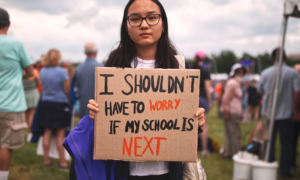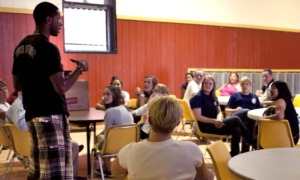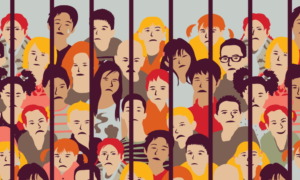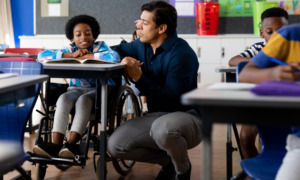
Yupa Watchanakit/Shutterstock
.
ATLANTA — Understanding how homeless youth are trafficked is important information for the organizations offering them services.
That’s the conclusion of a report released today based on a 2018 count of homeless and runaway young people ages 14-25 in Atlanta.
“Clearly, talking about trafficking is critically important,” said Eric Wright, chairman of the sociology department at Georgia State University, who led the survey and report.
Atlanta Youth Count 2018 found about 3,372 homeless young people in the five-county metro area, about as many as were counted in 2015. It found a high prevalence of sex and labor trafficking. One-fifth of the youth had experienced commercial sex exploitation.
“The labor trafficking was much more prevalent than the sex trafficking,” Wright said.
The United Nations Office on Drugs and Crime defines human trafficking as the “acquisition of people by improper means such as force, fraud, or deception, with the aim of exploiting them” for labor or sex.
Homeless young people live in a precarious economic situation, Wright said. “They were taken advantage of in a variety of ways.”
Often they would do marginalized jobs such as mowing lawns, running errands, selling drugs or doing hotel or restaurant work for cash. A common experience they described was being offered a place to sleep in return for work, with their driver’s license confiscated to make sure they couldn’t run away or steal, the report said.
Almost one-fourth of the youth surveyed (23.8 percent) identified as lesbian, gay or bisexual; these youth were particularly at risk for sex and labor trafficking. Forty-three percent of LGB youth reporting some form of trafficking while homeless.
Because of this prevalence, the report recommends that providers and community groups create more LGBTQ-sensitive support services.
About 6.5% of the youth identified as transgender or gender nonconforming.
“They stood out as being more vulnerable,” Wright said. Almost three-quarters of transgender youth reported some form of trafficking.
There’s a need among service providers for better understanding, support and greater inclusivity of transgender youth, he said. Organizations need to develop a broader understanding of trafficking across genders, the report said.
Of the youth surveyed, 64% were male and 36% female. Most were African-American or multiracial.
High prevalence of ACEs
Nearly 60% of the youth had a high incidence of childhood trauma. High trauma correlates with a much higher incidence of trafficking.
The report recommends that service providers offer more trauma-informed care.
“Most providers are trying to do some of that work,” Wright said. But they are often focused on providing emergency housing.
“Thinking about how to wrap around services is critical,” he said.
The incidence of trafficking is also high among youth who have been in the foster care or juvenile justice system. They comprise 63% of the homeless youth counted.
Trafficking is also higher among youth who have been homeless for more than a year. Almost one-fourth of the youth surveyed had been homeless that long. The report advised earlier intervention and quick housing to lower the risk of chronically homeless youth being exploited.
The Atlanta Youth Count 2018 took place from September to November in 2018. A team of researchers and youth-serving agencies worked with students from Georgia State’s Sociology Domestic Field School, who made contact with homeless youth and collected information.





























